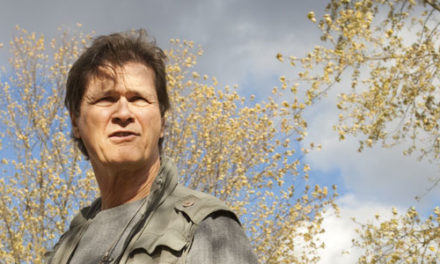
A baby screech owl keeps an eye on photographer Jeff Danielson, in May 2013 in a residential area of Bloomington. Photo by Jeff Danielson
BY SUSAN M. BRACKNEY
PHOTOGRAPHY BY STEPHEN SPROULL • NATURE PHOTOGRAPHY BY JEFF DANIELSON
There was a time when the whooping crane had no protections. Back then, there was no Endangered Species Act, no national wildlife refuges—in fact, the very concept of the environment as something to be protected, or even considered, was utterly foreign. With the tide turning again, at least politically, it may be of some interest to note that there were at least two presidents—Teddy Roosevelt and Richard Nixon—both Republicans, whose administrations left a legacy of environmental conservation. Roosevelt established hundreds of national forests, parks, and monuments, officially preserving more than 230 million acres of American wilderness. For his part, nearly 70 years later, Richard Nixon would form the Environmental Protection Agency.
In the past, Indiana was covered with forest. “Between 1800 and 1810, the state had more than 20 million acres of hardwood forest,” says Jeffrey Stant, Indiana Forest Alliance executive director. “In less than a century, they cut it down to less than 1 million acres.” At present, the state has just under 5 million acres. “And what we have now are scattered woodlots rather than large swaths of contiguous, old-growth forestland,” Stant adds.
Previous Indiana Republican governors—namely Dr. Otis Bowen (1973–81) and Robert Orr (1981–89)—deserve credit for some of the forested acres that do remain. “They established the first back-country areas of state forests,” Stant says. “They were de-emphasizing timbering or were not doing it altogether, in order to preserve wilderness areas in the state forests and wild areas for wilderness recreation.”
READ THE FULL STORY HERE!











Terrific article. Looking forward to reading more articles related to the environment.